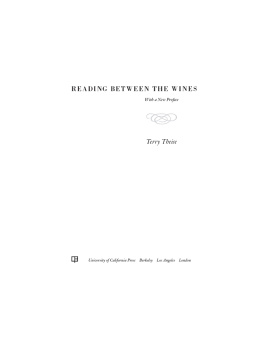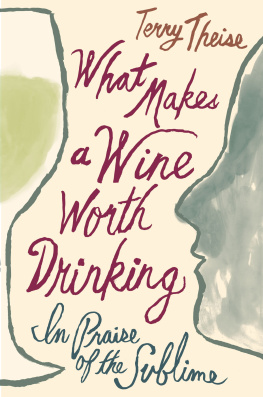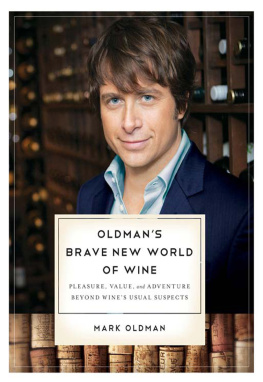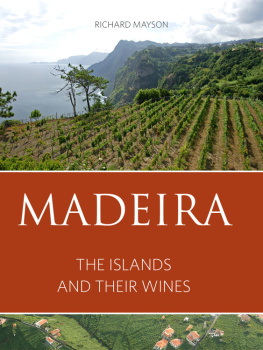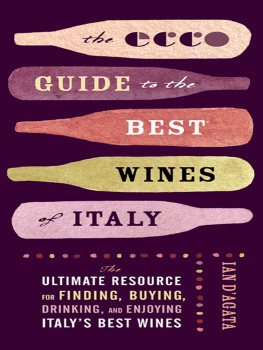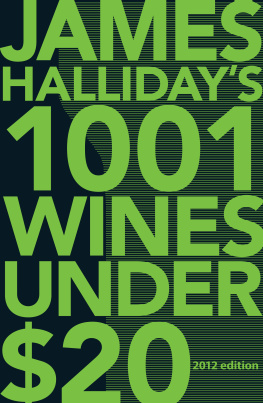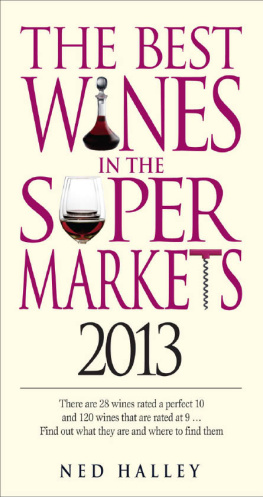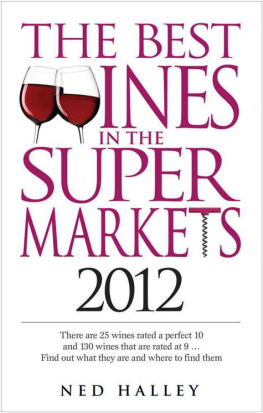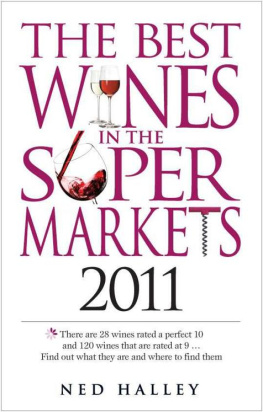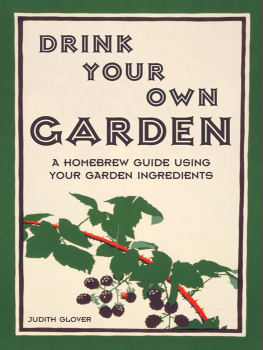Theise - Reading between the Wines
Here you can read online Theise - Reading between the Wines full text of the book (entire story) in english for free. Download pdf and epub, get meaning, cover and reviews about this ebook. City: Berkeley;Calif, year: 2011, publisher: University of California Press, genre: Home and family. Description of the work, (preface) as well as reviews are available. Best literature library LitArk.com created for fans of good reading and offers a wide selection of genres:
Romance novel
Science fiction
Adventure
Detective
Science
History
Home and family
Prose
Art
Politics
Computer
Non-fiction
Religion
Business
Children
Humor
Choose a favorite category and find really read worthwhile books. Enjoy immersion in the world of imagination, feel the emotions of the characters or learn something new for yourself, make an fascinating discovery.
- Book:Reading between the Wines
- Author:
- Publisher:University of California Press
- Genre:
- Year:2011
- City:Berkeley;Calif
- Rating:5 / 5
- Favourites:Add to favourites
- Your mark:
- 100
- 1
- 2
- 3
- 4
- 5
Reading between the Wines: summary, description and annotation
We offer to read an annotation, description, summary or preface (depends on what the author of the book "Reading between the Wines" wrote himself). If you haven't found the necessary information about the book — write in the comments, we will try to find it.
Reading between the Wines — read online for free the complete book (whole text) full work
Below is the text of the book, divided by pages. System saving the place of the last page read, allows you to conveniently read the book "Reading between the Wines" online for free, without having to search again every time where you left off. Put a bookmark, and you can go to the page where you finished reading at any time.
Font size:
Interval:
Bookmark:
ACKNOWLEDGMENTS
I wish I had thought of this book's title all by myself. In fact, the man who thought of it was New York restaurateur Peter Hoffman, who hosted a wine dinner featuring a poetry reading between courses, and wines. Of course, I'd have thought of it eventually. Of course.
Robert Bobby Kacher got me my first job in the wine business. He took a leap of faith. I had no experience and was quite a wine bore. Although he and I disagree at times, and our philosophies could be said to be at odds, he is a great hero. He knows himself and is faithful to his truthhe has integrity.
Howard G. Goldberg first discovered me, in 1987, when my fledgling portfolio showed well in a tasting he attended. He has been an unfailingly generous and not entirely uncritical angel ever since.
David Schildknecht was in retail when we first met. We quickly became brothers in arms, and have remained so even as our interests have diverged.
Among the many people who have offered encouragement and support beyond the call, Howard Silverman, Bill Mayer, Tom Schmeisser, Paul Provost, and Hiram Simon all stand out.
The first sommeliers to put my wines in their programs were real pioneers. They included Scott Carney, Andrea (then) Immer, Daniel Johnnes, and Steve Olsen. All are still in the industry in various capacities, and none has suffered an apparent neck injury from having stuck it out as far as they did.
Alice Feiring was instrumental in helping me find an agent and publisher. When I asked her we were barely even acquaintances, but she assisted me with a touching and nearly incredible generosity.
Marnie Old took time and care with this project, for which I thank her.
Betsy Amster is a wonderful agent and critic and friend.
Blake Edgar has been kind beyond measure as I taxed his patience with this manuscript.
I work with outstanding people. Kevin Pike, Liz DiCesare, Jonathan Schwartz, and Leif Sundstrm are all much more than colleagues; they are kin. My association with Michael and Harmon Skurnik has been a joy from the first moment, and remains the best move I ever madein a rare moment of wisdom and luciditysince entering the wine business.
Without the sage council and abiding friendship of Peter Schleimer, I could never have launched my Austrian wine program, not to mention I'd be a much less happy guy.
I thank every single vintner whom I have ever represented for the privilege of being associated with their fine work, and for the trust and friendship they have shown me.
But one family stands out. And a story wants to be told.
After I made my first trip to German wine regions, in May 1978, I returned in a state of fanatic wonder. And I immediately set about locating all of Munich's fine-wine retailers to see what I could buy close to home. One of these shops was in a basement in a near-in suburb, and I was browsing during my first visit when I heard the proprietor's voice admonishing a customer in tones of nearly theatrical snootiness. I looked around and caught sight of a young man, apparently an employee, with whom I exchanged a mutual raising of the brows.
I approached him and asked, Did he really just say that to the guy? and received the reply, Oh, he's just warming up; it gets worse as the day goes on. And we were off and running, the first words of a friendship that is in its thirty-second year. I learned the young man was the son of a winegrower named Strub, in Nierstein, a village I had just visited. Next time you come, please stop in at my winery, he invited.
Walter Strub was in the middle of his Wanderjahr when he had to return to the estate. His father had suffered a heart attack and his mother had burned her hands; Walter was needed. I visited him many times over the next four years, and we sat up many a night saving the world over bottles of wine at the kitchen table, as young men do. When I was preparing to return to the United States, Walter drove the four hours to Munich to pack up my cellar and have it shipped for me. He was the first vintner to let me taste prebottled wine before dosage was blended in to adjust the final sweetness.
When I conceived the notion of creating a German wine portfolio a few years later, Walter was the first person I visited. By then there was Margit, whom he soon married. I have worked with Strub's wines since day one, and have spent more pleasurable hours with him and Margit than with anyone else I know.
This might not have happened had I confessed an appalling transgression I perpetrated early on. It was July, and I was in Germany putting the first version of my portfolio together, and I started with a visit to Nierstein, where Walter and Margit put me up in their attic guest room. It was my first day, I was jet-lagged, and we had stayed up far too late and drunk an absurd quantity of wine. Sometime in the night I had to piss with great ferocity. The house was dark, and its narrow wooden stairways were steep and creaky. I could turn on the lights and wake everyone, or try to stumble down and risk a serious and noisy fall. To make things worse it had started to rain. Hard. But that gave me a hideous idea. I could piss out the window! The rain would wash it away, and no one would ever know. Ahhhh-h-h-h!
When I rose the next morning I looked out my window and saw I had pissed on Walter's father's car, and when I confessed this sordid business many years later, to gales of laughter, Walter said, My father could never understand where this green spot came from on his roof!
When Hans Selbach died, I arranged to fly over for the funeral. I'd be on the ground less than thirty-six hours. I phoned Walter and said I'd drop byNierstein is twenty-five minutes from Frankfurt airportto drink a pot of tea before making the two-hour drive to the Mosel. Don't do that, Walter said. I'll pick you up, and we can drive to the Mosel together, and then I'll bring you back to Nierstein. Hearing the friendship in his words, I nearly wept. He'd save me the expense, the exhausted drive, and the solitude. This is what a friend does.
Lifelong friendships will invariably fly through weather from time to time, as ours has, and might again. But there isn't a single day I am not grateful to the Strub familyMargit, Walter, Sebastian, Johannes, Juliane, even Emma the piddling beagle (like I'm one to talk)for the simple miracle of being such good people. This book is written with love for them all.
| Designer: | Nola Burger |
| Text: | 10/15 Janson |
| Display: | Bodoni Roman |
| Compositor: | BookMatters, Berkeley |
| Printer and Binder: | Maple-Vail Book Manufacturing Group |
one

BEFRIENDING YOUR PALATE
First you master your instrument. Then you forget all that shit and just play. Charlie Parker, when asked how one becomes a great jazz musician
Y ou're at home watching TV in the evening. Let's say you're watching a DVD of something you really like. Unless you have some monstrous home-theater system, you're looking at a relatively small screen across the room. You can't help but see all your stuff strewn about. Usually you have a light or two on. You hear ambient noises.
Now pretend you're at the movies. The lights go down, and you're sitting in a dark room with a bright screen encompassing your whole field of vision. Even with others around you, there is a strange, almost trance-like intimacy between these huge, bright images and your emotions. All great directors are acquainted with this spell; it's the essence of cinema. And it arouses a deep, almost precognitive attention from us.
We often think of palate as our physical taste receptor, the mouth itself, and, more saliently, the sense of smell. But a palate is more than what you taste; it is your
Next pageFont size:
Interval:
Bookmark:
Similar books «Reading between the Wines»
Look at similar books to Reading between the Wines. We have selected literature similar in name and meaning in the hope of providing readers with more options to find new, interesting, not yet read works.
Discussion, reviews of the book Reading between the Wines and just readers' own opinions. Leave your comments, write what you think about the work, its meaning or the main characters. Specify what exactly you liked and what you didn't like, and why you think so.

